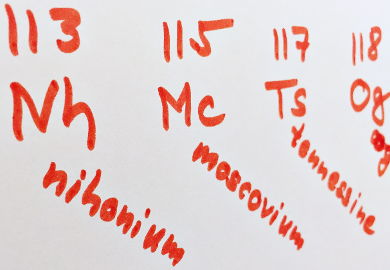The International Union of Pure and Applied Chemistry (IUPAC) approved the names and symbols for nihonium (Nh), moscovium (Mc), tennessine (Ts), and oganesson (Og), respectively for element 113, 115, 117, and 118. The names were proposed by the discoverers. Following a 5-month period of public review, they have been approved.
The elements have been named after a place or geographical region, or a scientist. The ending of the names reflect and maintain historical and chemical consistency: “-ium” for elements 113 and 115 and as for all new elements of groups 1 to 16, “-ine” for element 117 belonging to group 17, and “-on” for element 118 belonging to group 18 [1].
Comments from the general public included full agreements as well as suggestions of other names, in some cases accompanied by petitions from large groups of people. However, under the current guidelines only the discoverers have the right to propose names and symbols. IUPAC also received questions about the pronunciation of the names and the translations into other languages. Members of the chemistry community raised the concern that Ts is one of the two commonly used abbreviations for the tosyl group. IUPAC concluded that the context in which the symbols are used makes the meaning unambiguous. In addition, there are other two-letter abbreviations with multiple meanings.
Scientists are searching for elements beyond the seventh row of the periodic table. IUPAC and the International Union of Pure and Applied Physics (IUPAP) are establishing a new joint working group to examine the criteria used for the discovery of new elements.
[1] W. H. Koppenol, J. Corish, J. Garcia-Martinez, J. Meija, J. Reedijk, Pure Appl. Chem. 2016, 88, 401. DOI: 10.1515/pac-2015-0802



